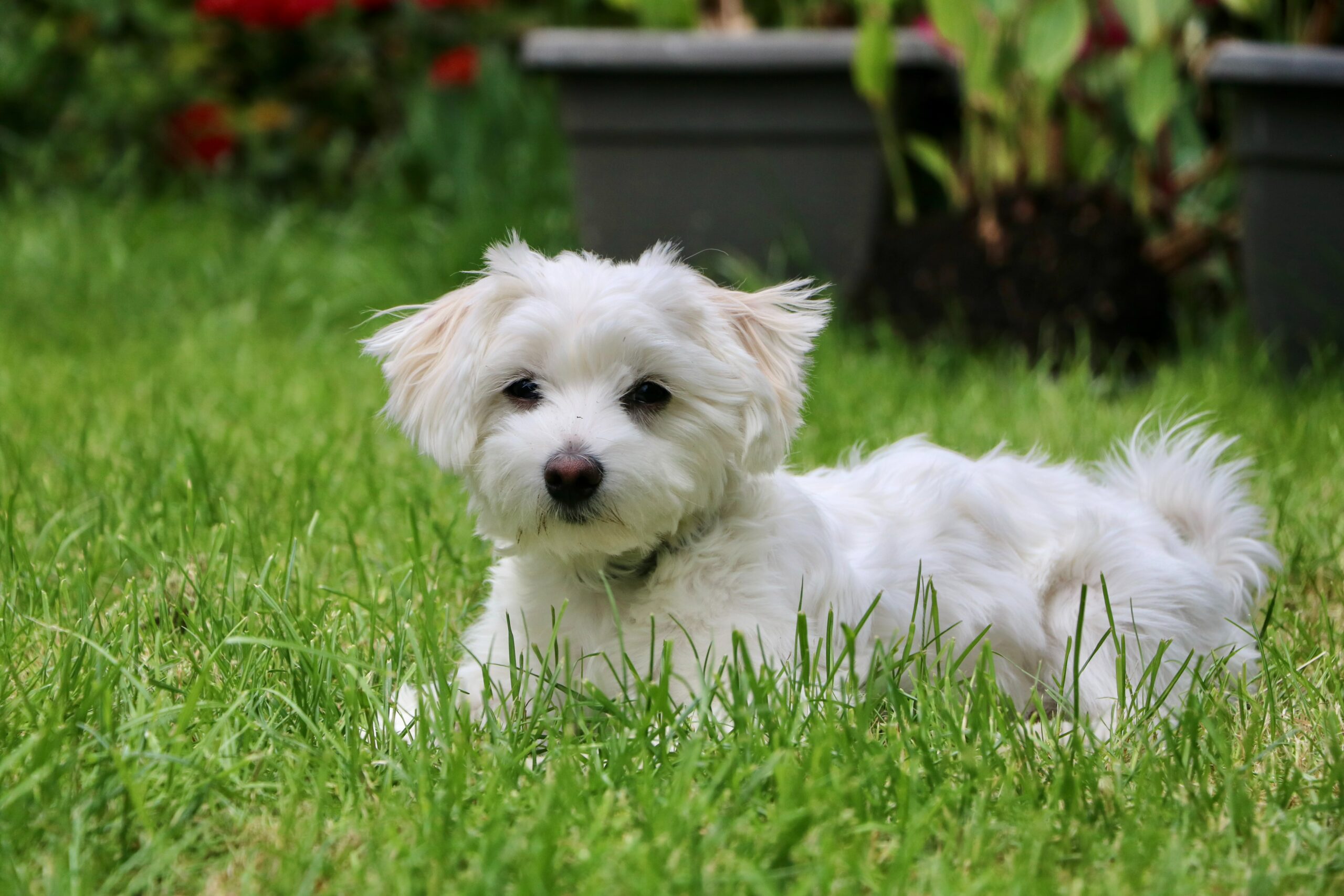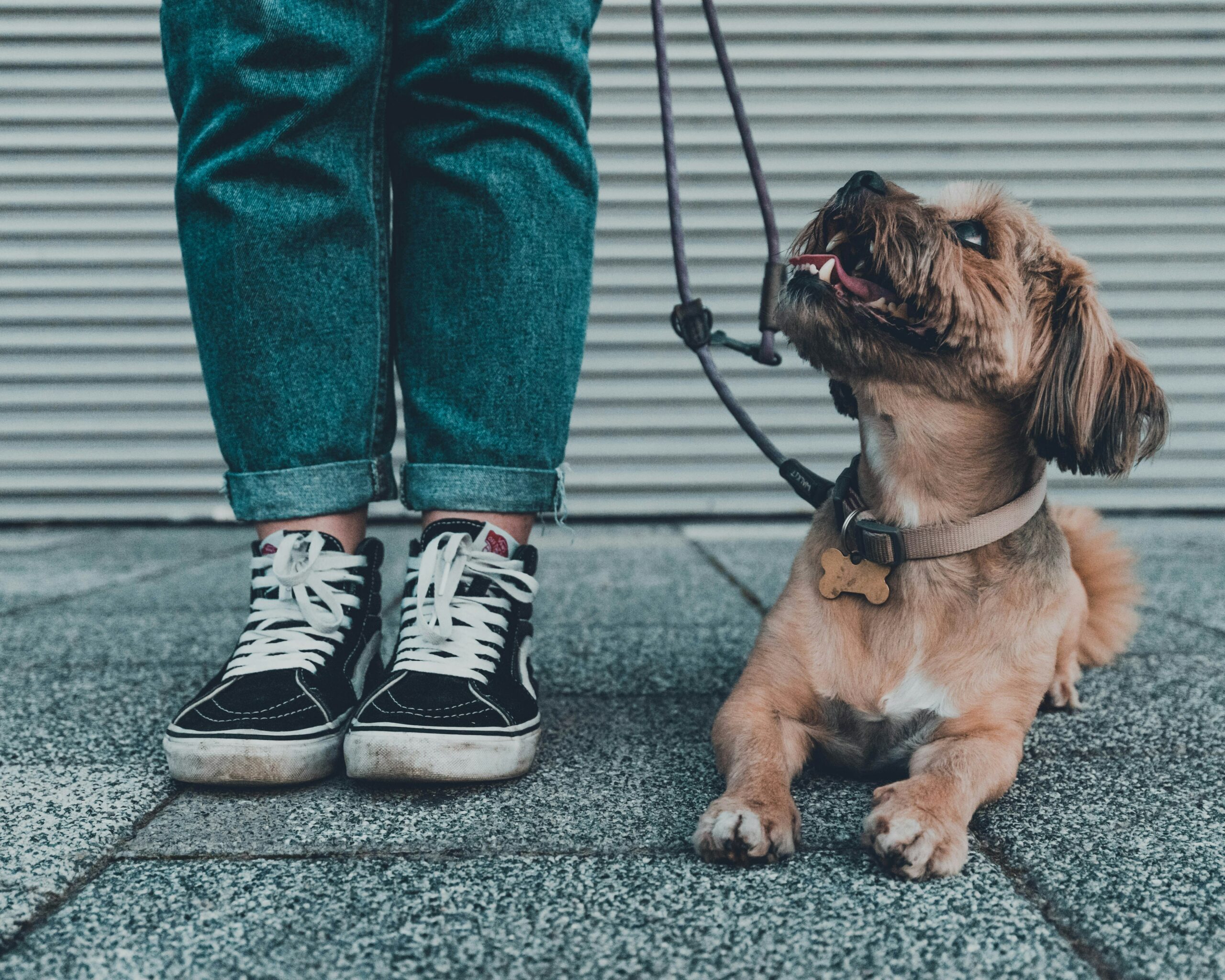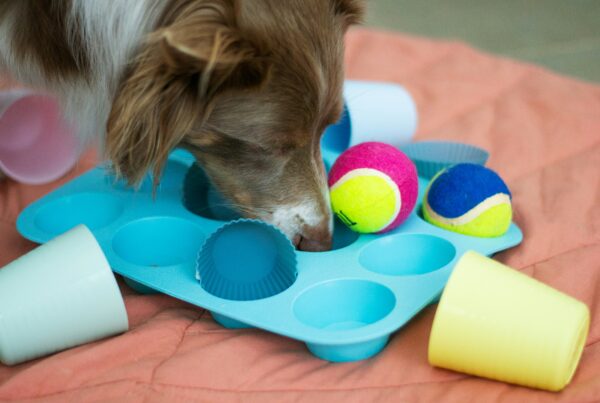Dogs love to be outdoors. You can see it in your dog’s eyes, his wagging tail, and his bouncy steps as he heads out the door for each walk around the neighborhood. It is important for a dog’s health that they are able to spend a significant amount of time outdoors each day. Time spent outdoors provides crucial physical exercise, stimulation for your dog’s senses, and a sense of variety in his routines. An active dog is a healthy dog, and for these close ancestors of the wolf, the more of that activity that is outdoors, the better.
Even while walking on a leash, dogs enjoy a sense of freedom and exploration. But if you are lucky enough to have backyard space, your property is an incredible opportunity to create some enhanced outdoor territory for your dog to wander, and possibly to practice some of his natural behaviors that might be destructive while indoors.
The great news is that it does not cost a fortune to transform your backyard into a puppy paradise— just some investment in low-cost materials and a bit of ingenuity. Here are a few ideas you might consider to make your backyard space into a playground that will stimulate your dog’s playfulness and curiosity, while also keeping him safe.
Keep it Fenced

Of course, your dog would love to have free reign over the whole neighborhood. But in order to keep him safe while off-leash in a backyard space, and your community feeling secure, you will need to surround the outdoor space with secure fencing.
Fencing for your dog does not have to be extraordinarily expensive, as long as you are willing to spend some elbow grease on the project. You can purchase an affordable do-it-yourself dog fencing kit, or research ways to create your own fencing. While you’re at the research stage, make sure to investigate how high your dog’s breed can jump, as there’s nothing worse than building a full fence only for your dog to quickly prove that it was constructed a few inches too short.
If you are looking for ways to integrate your fence with the landscaping, consider planting bushes or shrubs around the base, or adding some creeping vines that will grow up the posts.
Grow the Ground Cover

Dogs can be tough on manicured lawns. They dig, they pee, and they run around in circles, and all of these behaviors can leave a beautiful lawn landscape looking a bit worn. Some grasses work better than others for canines—for instance, Kentucky Bluegrass is very durable, while clover is safe and hearty for dogs and requires minimal fertilizer or upkeep.
If you’re looking for ways to eliminate your grass woes altogether, consider using mulch or sand in areas of your dog’s yard. Cedar mulch is relatively inexpensive, smells great, and even provides some natural fly repellent. Stay away from cocoa mulch, which is toxic to dogs.
If you are seeking ways to add some dog-friendly variety to your lawn, check out the ASPCA’s list of plants that are non-toxic for dogs. Most plans on the list are durable and easy to grow, and all are safe for your pup’s playground. Think about designing your landscaping with dog-friendly plants and flowers that are both safe and attractive, such as snapdragons, marigolds, sage, sunflowers, and zinnia. Always be conscious that herbicides and pesticides can be toxic to animals, so if you need to use these, carefully follow the instructions for safe use.
Create a Shady Area
 As much as your dog may love to snooze in the sun, too much of the sun’s rays can be harmful. Dogs can get sunburns or suffer from heat exhaustion, especially during an afternoon of play. You will want to ensure that your dog’s yard space has either some natural shade from trees, or some shade from a structure that you create.
As much as your dog may love to snooze in the sun, too much of the sun’s rays can be harmful. Dogs can get sunburns or suffer from heat exhaustion, especially during an afternoon of play. You will want to ensure that your dog’s yard space has either some natural shade from trees, or some shade from a structure that you create.
Of course, you can create shade with a traditional doghouse. Today’s doghouse options go far beyond what you remember from Snoopy cartoons—you will find options that include decks, indoor eating and drinking, and even artificial turf on the front porch. You can find ready-made houses as well as plans to design and customize your own.
Another option is to create a shady overhang that both you and your dog can enjoy together. Use some lumber and pergola brackets to design a shady and stylish living space for you and your dog to enjoy a rest on long summer afternoons.
Control the Paths
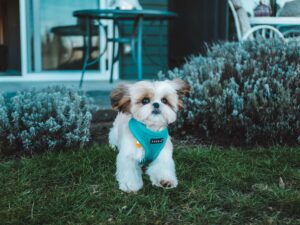
It is instinctual for your dog to follow and explore paths, just like his ancestors did while traversing their hunting routes. Left to his own devices, your dog will likely create his own well-traveled ‘dead zones’ of unsightly bare ground in a yard. There are a few ways that you can manipulate this behavior through the design of your dog’s playground.
If your dog tends to run along the fence, consider planting some landscaping in front of the fence that will break up his route. Tough grasses and native shrubs will look great and also hold up to some occasional leaps and bounds along the line.
If your dog has a regular pathway, think about placing large objects like big flower pots, chairs, or picnic tables to divert his path. He may find another pathway in the yard, but you can often redirect him for long enough that areas can grow back. You can also create enticing paths for your dog using materials that will be both attractive and comfortable on his feet, like concrete, pebbles, artificial turf, paving, bricks.
Design a Splash Zone
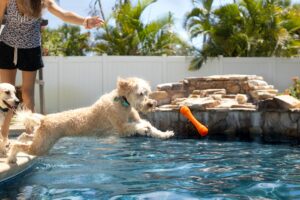
Many breeds of dogs love to swim and play in the water, and nearly every dog can be enticed to splash around on a hot day. It’s okay if you don’t have a fancy inground pool, or a natural pond or stream on your property—not every homeowner is so lucky! Sprinklers are relatively inexpensive, and both dogs and kids love to play in them. You can also purchase an inexpensive kiddie pool or portable pop-up pool that will be great for doggy splashes and photo opportunities.
Regardless of whether or not your dog’s playground includes a pool, it must include constant access to fresh, clean water. You can purchase a doggy water fountain that attaches to your hose, or simply designate an area where your dog will always be able to find a water bowl that you fill regularly.
Make the Markers
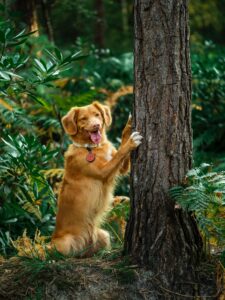
Another of your dog’s natural instincts is to pee on objects or markers to establish their territory. A dog’s pee is the equivalent of human social media. By urinating on rocks, trees, or fence posts, your dog shares information like their health, age, and sexual availability. No wonder your dog often wants to stop, sniff, and pee at every signpost during a walk.
Your dog will probably create his own territory markers—regular spots to pee—in his puppy playground. You probably would rather these spots not include your picnic table or grill, so consider setting up a few areas that are clearly designed for your dog’s ease of marking, like large rocks or pieces of driftwood.
Some experts suggest that you can create a dog potty area in your yard by designating a corner of the yard with a small, low fence as a marker that encloses an area of pea gravel, mulch, or sand. If you have house trained your dog, you already know some of the strategies to encourage specific places to go potty.
Design Playground Features
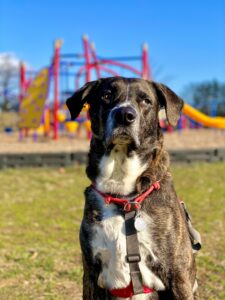
Dogs are naturally playful and intelligent, and they truly love to run, jump, slide, and climb. With a trip to the hardware store and just a bit of creativity, you can design a do-it-yourself doggy playground that both looks great and inspires your dog to stay active.
Old tires can turn into a tunnel or obstacle course. It’s easy to create some agility jumps out of PVC pipe and a few connectors. If your dog loves to climb, create a doggie slide and benches that he can jump from. Inexpensive crawl tunnels are made for kids, but also perfect for pooches. There are plenty of free DIY designs for dog playgrounds that you can find on Pinterest. Many examples use recycled or upcycled materials that are great for the environmentally conscious.
A digging area is a must for some dogs who might otherwise follow their instincts a bit too much in a yard space. If you find that your dog is digging undesired holes, design a sandbox for digging out of a few strips of lumber. You can convince your dog that this area is perfect for digging by burying a few favorite toys or treats.
With all of these ideas in mind, you are ready to design a backyard paradise for your dog. It does not take a major financial investment or a gigantic yard space to create a space where your dog will have a blast in the great outdoors. Keep it simple, pay attention to what is making your dog’s tail wag, and make adjustments as you go. The best dog-friendly backyards are enticing both for the dog and his people, inspiring play for the whole family.
photo credit: https://unsplash.com/photos/eRvOIPAnL3A
https://unsplash.com/photos/PDttMtvWfpg
https://unsplash.com/photos/0ImqAx2eZIQ
chase-fade-l4qY_7sssyU-unsplash
https://unsplash.com/photos/uiJ49cEhEf0
https://unsplash.com/photos/YOVviMnAlEA
https://unsplash.com/photos/RdtHKJcszMw
Love our content? Share it with a friend or link it to social media. Like short clips of cute household pets? Training tips? Follow us on instagram @nydognanny or on YouTube at nydognanny. Have some news you needs to get to dog and cat parents stat? Email info@newyorkdognanny.com with your article pitch.

